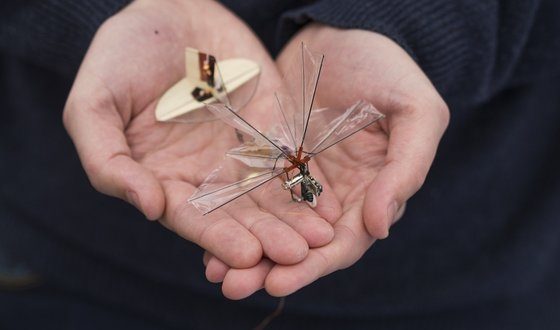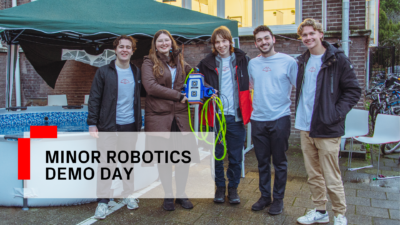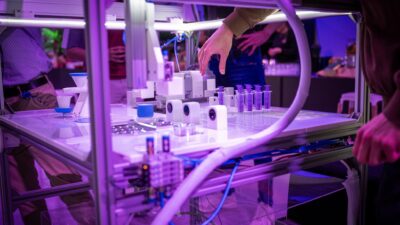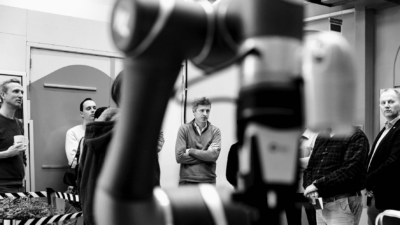A society that prepares for robots will be better off. That’s the idea behind the e-book Living with Robots, which we launched last month. It expounds what our future with robots will really look like. Robots will take on new roles and will fulfil new tasks. That’s not just about jobs, as is often framed in the press. It’s also about the division of labour between human and machine, about shifting responsibilities and new capabilities.
The interactive e-book takes up these issues with some compelling questions as a starting point. Will robots help the elderly to remain independent? Will autonomous cars make cities cleaner and safer? Will a robot chef ever earn stars for its restaurant? In the quest for answers, four journalists present a nuanced picture of the promises and consequences of robotic technology, using a mix of different media. There are background stories, podcasts, videos and pictures. Together, they form an appealing image of new developments.
The book was presented at the International Master Class Robotics in Delft in October. New chapters will be added, as technology progresses and new issues come up.
Civilian drones
This month we will add a chapter about civilian drones. We show how drones are acquiring the characteristics of autonomous robots – and consequently are facing similar technological challenges: vision, artificial intelligence, advanced mechanics and energy storage. However, by flying, the limits of robots come faster into sight. We show how these limits are being pushed by new technological developments.
This opens new areas for applications. As drones acquire more autonomy and intelligence, flying them will become easier and safer. In a live debate in the book, Bart Remes (TU Delft) and Rob van Nieuwland (Darpas) discuss the consequences.
The e-book can be downloaded as an app for iPad and Android tablets from livingwithrobots.info. The new chapter about drones will be added in mid-December, right on time for the holiday season.



